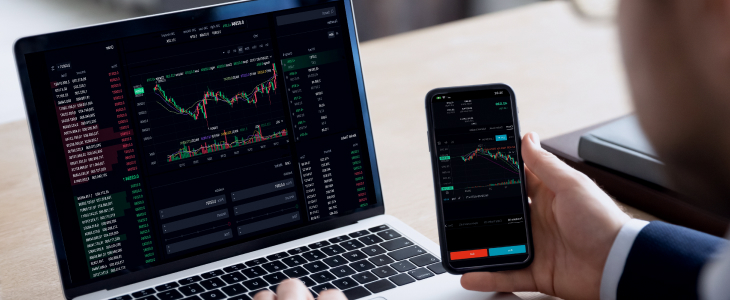
Understanding Automated Trading in Forex: Benefits and Strategies
In recent years, the landscape of forex trading has undergone a significant transformation. With the advent of technology, traders now have access to a plethora of tools and platforms that enable them to optimize their trading strategies. One of the most revolutionary advancements in this domain is automated trading. If you are looking to delve into this exciting field, consider exploring automated trading forex Online Trading CM for a comprehensive trading experience. In this article, we will explore what automated trading is, its benefits, and effective strategies to get you started.
What is Automated Trading?
Automated trading, also known as algorithmic trading, involves using computer programs to execute trades on behalf of a trader. These programs analyze various market data and execute trades based on predefined criteria set by the trader. The primary goal is to eliminate emotional decision-making and speed up the execution process, allowing for trades to be completed at optimal prices.
Benefits of Automated Trading
There are multiple advantages to incorporating automated trading into your forex trading strategy. Here are some of the key benefits:
- Emotion-free Trading: Automated trading systems operate based on algorithms rather than feelings. This helps prevent emotional reactions that can lead to poor trading decisions.
- Speed: Automated systems can execute trades much faster than a human trader can react to market changes. This capability is essential in the fast-moving forex market.
- Consistent Results: By following a defined strategy without deviations, automated trading can lead to more consistent trading results over time.
- Backtesting: Traders can evaluate the performance of a trading strategy using historical data before deploying it in real-time trading, minimizing risk.
- Diversification: Automated systems can manage multiple accounts or strategies simultaneously, allowing traders to diversify their investments effectively.
Getting Started with Automated Trading
Starting with automated trading involves several steps, which include selecting a trading platform, designing or choosing a trading strategy, and monitoring your trades. Here’s how you can get started:
Selecting a Trading Platform
The first choice you need to make is selecting a trading platform that supports automated trading. Look for platforms that offer user-friendly interfaces and are compatible with various trading algorithms. Additionally, ensure that the platform you choose complies with regulatory standards and is reputable within the trading community.
Designing Your Trading Strategy
A solid trading strategy is the backbone of successful automated trading. You can either develop your own strategy based on technical and fundamental analysis or use pre-existing algorithms developed by experienced traders. When designing your strategy, consider the following:
- Market Analysis: Determine the market conditions your strategy addresses. Will it be trend-following, range-bound, or based on volatility?
- Risk Management: Establish risk management rules, such as stop-loss and take-profit levels, to protect your capital.
- Trade Execution: Define how trades will be entered and exited. Will you use limit orders, market orders, or a combination of both?
Monitoring Your Automated Trades
Although automated trading can operate independently, it’s vital to monitor your trades periodically. Market conditions can change rapidly, and adjustments may be necessary to your strategy. Regularly reviewing your performance will help you identify potential areas for improvement and ensure that your strategy remains aligned with your trading goals.

Common Strategies in Automated Forex Trading
Several popular strategies are commonly used in automated forex trading. Some of these include:
1. Trend Following
Trend-following strategies aim to capitalize on existing market trends. Automated systems can be programmed to identify a trend and execute trades in the direction of that trend, entering positions when specific technical indicators signal potential price movements.
2. Arbitrage
Arbitrage strategies exploit price discrepancies in different markets. Automated trading can quickly buy or sell currency pairs simultaneously across different platforms, allowing traders to profit from minute price differences before they disappear.
3. Mean Reversion
Mean reversion strategies are based on the assumption that prices will revert to their historical average over time. Automated systems can be designed to monitor currency pairs and execute trades when prices deviate significantly from their average, betting they will return to that level.
4. News-based Trading
Automated systems can also be set up to react to economic news releases and other relevant events. These strategies require access to real-time news data and the ability to execute trades quickly in response to significant market-moving events.
The Importance of Continuous Learning
As with any trading method, continuous learning is essential in automated forex trading. The market is constantly evolving, and staying informed about new developments, technologies, and trading strategies is vital for maintaining a competitive edge. Engage with online communities, attend webinars, and read relevant literature to enhance your understanding and adapt your strategies as required.
Conclusion
Automated trading in forex offers numerous benefits, including emotional neutrality, speed, and consistent results. By selecting the right platform and strategy, traders can harness the power of technology to optimize their trading efforts. However, it is essential to remain vigilant and continuously evaluate the performance of your automated systems. With patience and proper training, automated trading can be a valuable addition to your forex trading toolkit.
